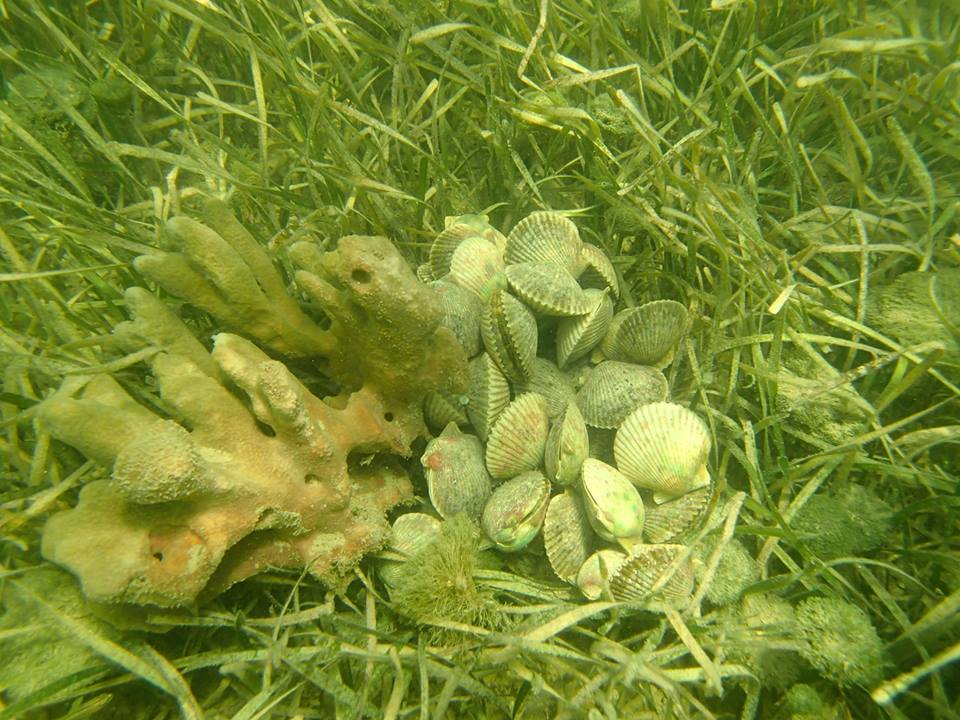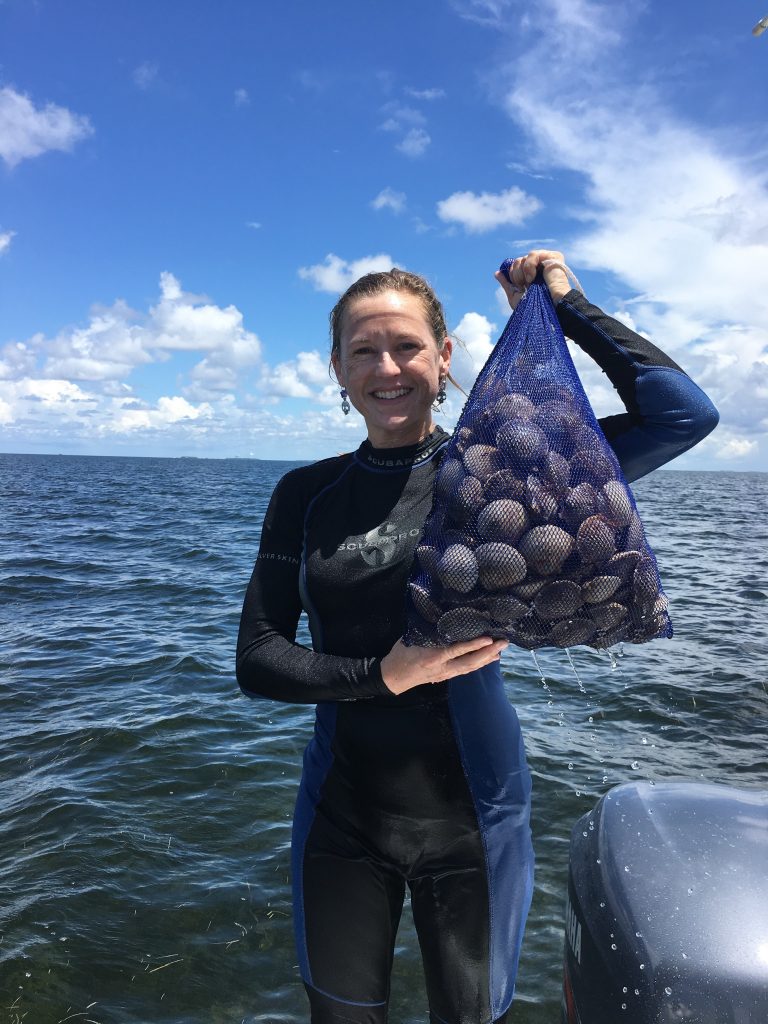Despite the school year starting, it is still summer in Florida. And to me, that means scallop season. I eagerly await the weekend when I join friends for a few glorious days spent snorkeling in the gulf, spying the blue-eyed mollusks hiding amongst lush blades of seagrass.
I am unabashedly good at scalloping and I often joke that it’s because I spent more than a decade working to improve water quality and restore seagrass (the preferred habitat for scallops) in Tampa Bay. While with the Tampa Bay Estuary Program, I brought in millions of dollars to research, transplant, and develop innovative ways to protect and restore habitats used by scallops and other creatures.
Scallops rely both on clear water and healthy seagrass beds to survive. Historically, the lower (saltier) portions of Tampa Bay were flush with scallops. However, years of unchecked pollution and development took their toll; water quality, seagrass habitat, and scallop populations plummeted. Billions of dollars and decades of hard work later, Tampa Bay is healthier than it was in the 1950s, but still cannot support a recreational scallop harvest.
Luckily, eight Gulf coastal counties, from Pasco County north and west over to Gulf County, do have a recreational scallop season, which is regulated by Florida Florida Fish and Wildlife Conservation Commission.
Each year, biologists do a pre-season assessment by counting the number of scallops found in a 200 square-meter area as a proxy for how abundant they may be in that region. There are fluctuations from year-to-year and a review of data since 2012 demonstrates that there is not really a “normal” year.
With that said, 2019 may be one of the worst years. With the exception of Gulf County, the remaining seven counties had historic or near-historic lows. In Citrus County, where I usually scallop, the abundance dropped from 21.1 scallops per 200 square meters in 2018, to just 4.3 in 2019. When I ventured out on the first weekend in July, we only found 11 scallops between the six of us. Usually, we’ll all reach our two-gallon limit in a few hours.
The question is, Why? Just like the economy, there are “good” and “bad” years and you can’t expect each year to be record-breaking. Recent rainfall has been heavier so scallops may have moved to deeper, saltier water (they can’t live in water that is too fresh). Lots of rain also washes pollutants, like fertilizer, into the water. Some spring-fed rivers that were once crystal clear are now plagued with mats or strands of algae. This decreases light availability, oxygen levels and the overall health of the system.
We may also be loving our scalloping too much. Fishing regulations strive to strike a balance between protecting the resource and maintaining recreational and commercial opportunities for harvest. As more people and more boats descend on these summertime playgrounds, we’re taxing the very resources we (and wildlife) depend on. Crabs, sea stars, and other animals also eat scallops. And with a short, one-year lifespan, local populations can be impacted if there are not enough remaining to produce offspring the following year.
Spending the day on the boat with friends and family creates lifelong memories and an appreciation for our environment. Scalloping is a teaching moment: our Gulf is fragile, and human actions have life or death impacts for marine wildlife. I hope that 2019 was just a “bad” year and that the blue-eyed beauties will be abundant again. But, just in case, I may stay on the dock next year.






